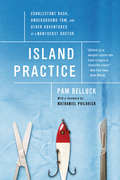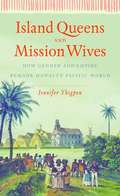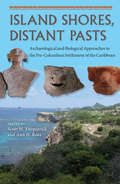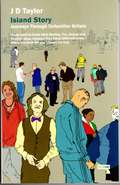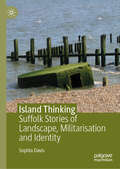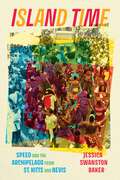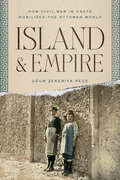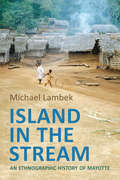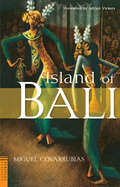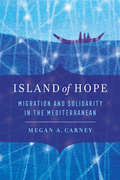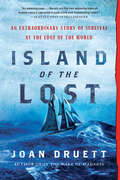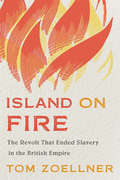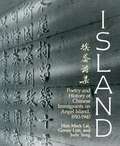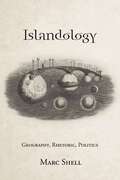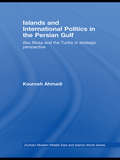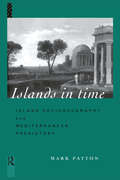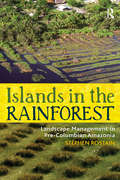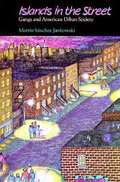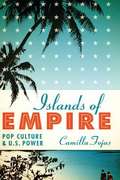- Table View
- List View
Island Practice: Cobblestone Rash, Underground Tom, and Other Adventures of a Nantucket Doctor
by Pam BelluckIf you need an appendectomy, he can do it with a stone scalpel he carved himself. If you have a condition nobody can diagnose--"creeping eruption" perhaps--he can identify what it is, and treat it. A baby with toe-tourniquet syndrome, a human leg that's washed ashore, a horse with Lyme disease, a narcoleptic falling face-first in the street, a hermit living underground--hardly anything is off-limits for Dr. Timothy J. Lepore. This is the spirited, true story of a colorful, contrarian doctor on the world-famous island of Nantucket. Thirty miles out to sea, in a strikingly offbeat place known for wealthy summer people but also home to independent-minded, idiosyncratic year-rounders, Lepore holds the life of the island, often quite literally, in his hands. He's surgeon, medical examiner, football team doctor, tick expert, unofficial psychologist, accidental homicide detective, occasional veterinarian. When crisis strikes, he's deeply involved. He's treated Jimmy Buffett, Chris Matthews, and various Kennedy relatives, but he makes house calls for anyone and lets people pay him nothing--or anything: oatmeal raisin cookies, a weather-beaten .44 Magnum, a picture of a Nepalese shaman. Lepore can be controversial and contradictory, espousing conservative views while performing abortions and giving patients marijuana cookies. He has unusual hobbies: he's a gun fanatic, roadkill collector, and concocter of pastimes like knitting dog-hair sweaters. Ultimately, Island Practice is about a doctor utterly essential to a community at a time when medicine is increasingly money-driven and impersonal. Can he remain a maverick even as a healthcare chain subsumes his hospital? Every community has--or, some would say, needs--a Doctor Lepore, and his island's drive to retain individuality in a cookie-cutter world is echoed across the country.
Island Queens and Mission Wives
by Jennifer ThigpenIn the late eighteenth century, Hawai'i's ruling elite employed sophisticated methods for resisting foreign intrusion. By the mid-nineteenth century, however, American missionaries had gained a foothold in the islands. Jennifer Thigpen explains this important shift by focusing on two groups of women: missionary wives and high-ranking Hawaiian women. Examining the enduring and personal exchange between these groups, Thigpen argues that women's relationships became vital to building and maintaining the diplomatic and political alliances that ultimately shaped the islands' political future. Male missionaries' early attempts to Christianize the Hawaiian people were based on racial and gender ideologies brought with them from the mainland, and they did not comprehend the authority of Hawaiian chiefly women in social, political, cultural, and religious matters. It was not until missionary wives and powerful Hawaiian women developed relationships shaped by Hawaiian values and traditions--which situated Americans as guests of their beneficent hosts--that missionaries successfully introduced Christian religious and cultural values.Incisively written and meticulously researched, Thigpen's book sheds new light on American and Hawaiian women's relationships, illustrating how they ultimately provided a foundation for American power in the Pacific and hastened the colonization of the Hawaiian nation.
Island Shores, Distant Pasts: Archaeological and Biological Approaches to the Pre-Columbian Settlement of the Caribbean (Bioarchaeological Interpretations of the Human Past)
by Ann H. Ross Scott M. Fitzpatrick"An excellent compilation of new methods and theories in Caribbean archaeology. . . . Not only materialize[s] the methodological advance in Caribbean archaeology, but also signif[ies] the strong theoretical progression that this discipline is experiencing."--Journal of Caribbean Archaeology "Look[s] beyond the field of archaeology to include new techniques from genetics, computer simulation, and physical anthropology. . . . Unquestionably moves our understanding of the settling of the Caribbean forward and provides several new provocative avenues for further exploration."--New West Indian Guide "Demonstrate[s] various methods that introduce new insights into the investigation of Caribbean prehistory, revealing the complexity of pre-Columbian cultures, peoples, and their movements. . . . [and] contributes to a totalizing view of the colonization process in the Caribbean."--Caribbean Quarterly "Can be considered as a real starting point for a biological approach of the pre-Columbian settlement of the Caribbean."-- Benoit Berard, Universite des Antilles For more than a century, archaeologists and anthropologists have searched for evidence of when and how peoples first settled the Caribbean islands. Research on this area is pivotal for understanding the migration of peoples in the New World and how small and large populations develop biologically and culturally through time. This unique collection synthesizes our archaeological and biological knowledge about the pre-Columbian settlement of the Caribbean and highlights the various techniques we can use to analyze human migration and settlement patterns throughout history. Newer and well-established techniques, like computer simulations of seafaring, radiocarbon dating, three-dimensional and traditional craniometrics, stable isotopes, and ancient and modern DNA analysis, show great promise for helping us better understand pre-Columbian Caribbean population expansions, while demonstrating the utility of integrating and comparing biological markers with the archaeological record. Surprisingly little attention has been paid to migrations, population movements, and island colonization in the Caribbean islands. This volume fills that void. Scott M. Fitzpatrick is professor of archaeology at the University of Oregon and founding coeditor of the Journal of Island and Coastal Archaeology. Ann H. Ross is professor of biological sciences at North Carolina State University. She is a contributor to Digging Deeper: Current Trends and Future Directions in Forensic Anthropology and Archaeology. A volume in the series Bioarchaeological Interpretations of the Human Past, edited by Clark Spencer Larsen
Island Songs
by Alex Wheatle**As featured on BBC2's INSIDE CULTURE with Mary Beard** "Alex Wheatle is the real deal; he writes with heart and authenticity" Kit De Waal"Island Songs grabs your heart, not with pity but with wonder that such beauty can come from such a life" Yasmin Alibhai-Brown, Independent"Alex Wheatle writes from a place of honesty and passion" Steve McQueen, director of Small AxeShe wondered what kind of world she had brought her two daughters into, the arduous cycle of rural Jamaican life. No chance for them to set off upon adventures and see the outside world.But sisters Jenny and Hortense Rodney, descendants of the fierce Maroon people, do get to see the outside world, and Island Songs is their story. Growing up in rural Claremont, working amid the hustle and bustle, lawn parties and houses of joy in Trenchtown, the two sisters take a chance and move to England with their husbands, that far-off land of riches, where they settle down to motherhood among the jazz cafés and bleak streets of Brixton.A hauntingly beautifully written evocation of twentieth-century Jamaica, its history and traditions, Island Songs is an epic of love, laughter and sorely tested family loyalties. Many stories are told, but many more secrets are never revealed.By the author of Brixton Rock, East of Acre Lane and Homeboys, and several bestselling, prizewinning novels for younger readers
Island Story
by J. D. TaylorWhat is life like on this island? With a tent and a rusty bike, J.D. Taylor set off to find out.No other subject has spilt so much ink as Britain today. But whilst assuming a monopoly on national identity, a London-based elite has proven a poor forecaster of the political weather around the island.Skeptical and inquisitive, Taylor instead cycled all round Britain, interviewing and staying with strangers from all walks of life. Without a map and travelling with the most basic of gear, the journey revels in serendipity and schadenfreude.Island Story weaves histories, experiences and ideas to tell another kind of story: one of rebellion and retail parks, migration and inertia, pessimism and disappearing ways of life, and a fiery, unrealized desire for collective belonging and power.Think you know the island? Island Story will have you think again.From the Trade Paperback edition.
Island Thinking: Suffolk Stories of Landscape, Militarisation and Identity
by Sophia DavisIsland Thinking is a cultural historical and geographical study of Englishness in a key period of cultural transformation in mid-twentieth century Britain as the empire shrank back to its insular core. The book uses a highly regional focus to investigate the imaginative appeal of islands and boundedness, interweaving twentieth-century histories of militarisation, countryside, nature conservation and national heritage to create a thickly textured picture of landscape and history. Referred to as an ‘island within an island’, Suffolk's corner of England provides fascinating stories displaying a preoccupation with vulnerability and threat, refuge and safety. The book explores the portrayal of the region in mid-century rural writing that ‘rediscovered’ the countryside, as well as the area’s extensive militarisation during the Second World War. It examines various enclosures, from the wartime radar project to ‘make Britain an island again’ to the postwar establishment of secluded nature reserves protecting British birds.
Island Time: Speed and the Archipelago from St. Kitts and Nevis (Chicago Studies in Ethnomusicology)
by Jessica Swanston BakerA close look at how wylers, a popular musical style from the island of St. Kitts and Nevis, expresses a unique mode of relation in the postcolonial Caribbean. In Island Time, ethnomusicologist Jessica Swanston Baker examines wylers, a musical form from St. Kitts and Nevis that is characterized by speed. Baker argues that this speed becomes a useful and highly subjective metric for measuring the relationship between Caribbean aspirations and the promises of economic modernity; women’s bodily autonomy and the nationalist fantasies that would seek to curb that autonomy; and the material realities of Kittitian-Nevisian youth living in the disillusionment following postcolonial independence. She traces the wider Caribbean musical, cultural, and media-based resonances of wylers, posing an alternative model to scholarship on Caribbean music that has tended to privilege the big islands—Trinidad, Jamaica, and Haiti—thus neglecting not only the unique cultural worlds of smaller nations but also the unbounded nature of musical exchange in the region. The archipelago emerges as a useful model for apprehending the relationality across scales that governs the temporal and spatial logics that undergird Caribbean performance. The archipelago and its speeds ultimately emerge as a meaningful medium for postcolonial, postmodern world-making.
Island and Empire: How Civil War in Crete Mobilized the Ottoman World (Stanford Ottoman World Series: Critical Studies in Empire, Nature, and Knowledge)
by Uğur Z. PeçeIn the 1890s, conflict erupted on the Ottoman island of Crete. At the heart of the Crete Question, as it came to be known around the world, were clashing claims of sovereignty between Greece and the Ottoman Empire. The island was of tremendous geostrategic value, boasting one of the deepest natural harbors in the Mediterranean, and the conflict quickly gained international dimensions with an unprecedented collective military intervention by six European powers. Island and Empire shows how events in Crete ultimately transformed the Middle East. Uğur Zekeriya Peçe narrates a connected history of international intervention, mass displacement, and popular mobilization. The conflict drove a wedge between the island's Muslims and Christians, quickly acquiring a character of civil war. Civil war in turn unleashed a humanitarian catastrophe with the displacement of more than seventy thousand Muslims from Crete. In years following, many of those refugees took to the streets across the Ottoman world, driving the largest organized modern protest the empire had ever seen. Exploring both the emergence and legacies of violence, Island and Empire demonstrates how Cretan refugees became the engine of protest across the empire from Salonica to Libya, sending ripples farther afield beyond imperial borders. This history that begins within an island becomes a story about the end of an empire.
Island in the Stream: An Ethnographic History of Mayotte (Anthropological Horizons)
by Michael Lambek Michael D. JacksonIsland in the Stream introduces an original genre of ethnographic history as it follows a community on Mayotte, an East African island in the Mozambique Channel, through eleven periods of fieldwork between 1975 and 2015. Over this 40-year span Mayotte shifted from a declining and neglected colonial backwater to a full département of the French state. In a highly unusual postcolonial trajectory, citizens of Mayotte demanded this incorporation within France rather than joining the independent republic of the Comoros. The Malagasy-speaking Muslim villagers Michael Lambek encountered in 1975 practiced subsistence cultivation and lived without roads, schools, electricity, or running water; today they are educated citizens of the EU who travel regularly to metropolitan France and beyond. Offering a series of ethnographic slices of life across time, Island in the Stream highlights community members' ethical engagement in their own history as they looked to the future, acknowledged the past, and engaged and transformed local forms of sociality, exchange, and ritual performance. This is a unique account of the changing horizons and historical consciousness of an African community and an intimate portrait of the inhabitants and their concerns, as well as a glimpse into the changing perspective of the ethnographer.
Island of Bali
by Adrian Vickers Miguel CovarrubiasIsland of Bali is now available with a foreword by Professor Adrian Vickers which puts the book into context for a modern audience.<P><P>First published in 1937, Island of Bali is still regarded by many as the most authoritative text on Bali and its fascinating people. Included is a wealth of information on the daily life, art, customs and religion of this magical "Island of the Gods." In the author's own words it presents a "bird's-eye view of Balinese life and culture."Miguel Covarrubias, the author, was a noted painter and caricaturist as well as a student of anthropology. He lived in Bali for a total of three years in the early 1930s, and today his account is as fresh and insightful as it was when it was originally published. Introducing the island with a survey of hits history, geography and social structure, Covarrubias goes on to present a captivating picture of Balinese art, music and drama. Religion, witchcraft, death and cremation are also covered.Island of Bali will appeal to anyone with an interest in this unique island, from general Eat, Pray, Love readers to serious anthropologist alike. Complementing the text are 90 drawings by Covarrubias and countless others by Balinese artists. Also included are 114 half-tone photographs, and five full-color paintings by the author.
Island of Hope: Migration and Solidarity in the Mediterranean
by Megan A. CarneyWith thousands of migrants attempting the perilous maritime journey from North Africa to Europe each year, transnational migration is a defining feature of social life in the Mediterranean today. On the island of Sicily, where many migrants first arrive and ultimately remain, the contours of migrant reception and integration are frequently animated by broader concerns for human rights and social justice. Island of Hope sheds light on the emergence of social solidarity initiatives and networks forged between citizens and noncitizens who work together to improve local livelihoods and mobilize for radical political change. Basing her argument on years of ethnographic fieldwork with frontline communities in Sicily, anthropologist Megan Carney asserts that such mobilizations hold significance not only for the rights of migrants, but for the material and affective well-being of society at large.
Island of Shame: The Secret History of the U.S. Military Base on Diego Garcia
by David VineThe American military base on the island of Diego Garcia is one of the most strategically important and secretive U.S. military installations outside the United States. Located near the remote center of the Indian Ocean and accessible only by military transport, the little-known base has been instrumental in American military operations from the Cold War to the war on terror and may house a top-secret CIA prison where terror suspects are interrogated and tortured. But Diego Garcia harbors another dirty secret, one that has been kept from most of the world--until now.Island of Shame is the first major book to reveal the shocking truth of how the United States conspired with Britain to forcibly expel Diego Garcia's indigenous people--the Chagossians--and deport them to slums in Mauritius and the Seychelles, where most live in dire poverty to this day. Drawing on interviews with Washington insiders, military strategists, and exiled islanders, as well as hundreds of declassified documents, David Vine exposes the secret history of Diego Garcia. He chronicles the Chagossians' dramatic, unfolding story as they struggle to survive in exile and fight to return to their homeland. Tracing U.S. foreign policy from the Cold War to the war on terror, Vine shows how the United States has forged a new and pervasive kind of empire that is quietly dominating the planet with hundreds of overseas military bases.Island of Shame is an unforgettable exposé of the human costs of empire and a must-read for anyone concerned about U.S. foreign policy and its consequences. The author will donate all royalties from the sale of this book to the Chagossians.Some images inside the book are unavailable due to digital copyright restrictions.
Island of the Lost: Shipwrecked at the Edge of the World
by Joan DruettAuckland Island is a godforsaken place in the middle of the Southern Ocean, 285 miles south of New Zealand. With year-round freezing rain and howling winds, it is one of the most forbidding places in the world. To be shipwrecked there means almost certain death. In 1864 Captain Thomas Musgrave and his crew of four aboard the schooner Grafton wreck on the southern end of the island. Utterly alone in a dense coastal forest, plagued by stinging blowflies and relentless rain, Captain Musgrave—rather than succumb to this dismal fate—inspires his men to take action. With barely more than their bare hands, they build a cabin and, remarkably, a forge, where they manufacture their tools. Under Musgrave's leadership, they band together and remain civilized through even the darkest and most terrifying days. Incredibly, at the same time on the opposite end of the island—twenty miles of impassable cliffs and chasms away—the Invercauld wrecks during a horrible storm. Nineteen men stagger ashore. Unlike Captain Musgrave, the captain of the Invercauld falls apart given the same dismal circumstances. His men fight and split up; some die of starvation, others turn to cannibalism. Only three survive. Musgrave and all of his men not only endure for nearly two years, they also plan their own astonishing escape, setting off on one of the most courageous sea voyages in history. Using the survivors' journals and historical records, award-winning maritime historian Joan Druett brings this extraordinary untold story to life, a story about leadership and the fine line between order and chaos.
Island on Fire: The Revolt That Ended Slavery in the British Empire
by Tom ZoellnerFrom a New York Times bestselling author, a gripping account of the slave rebellion that led to the abolition of slavery in the British Empire. For five horrific weeks after Christmas in 1831, Jamaica was convulsed by an uprising of its enslaved people. What started as a peaceful labor strike quickly turned into a full-blown revolt, leaving hundreds of plantation houses in smoking ruins. By the time British troops had put down the rebels, more than a thousand Jamaicans lay dead from summary executions and extrajudicial murder. While the rebels lost their military gamble, their sacrifice accelerated the larger struggle for freedom in the British Atlantic. The daring and suffering of the Jamaicans galvanized public opinion throughout the empire, triggering a decisive turn against slavery. For centuries bondage had fed Britain’s appetite for sugar. Within two years of the Christmas rebellion, slavery was formally abolished. Island on Fire is a dramatic day-by-day account of this transformative uprising. A skillful storyteller, Tom Zoellner goes back to the primary sources to tell the intimate story of the men and women who rose up and tasted liberty for a few brief weeks. He provides the first full portrait of the rebellion's enigmatic leader, Samuel Sharpe, and gives us a poignant glimpse of the struggles and dreams of the many Jamaicans who died for liberty.
Island: Poetry and History of Chinese Immigrants on Angel Island 1910-1940
by Him M. Lai Genny Lim Judy YungAngel Island, in San Francisco Bay, was the entry, internment center, and often closest approach to the US for Chinese immigrants in the early 20th century. Here are the thoughts they carved and inkbrushed on their barrack's walls, discovered after the center closed in 1940. Facing pages of Chinese and English. No index.
Islanders in the Empire: Filipino and Puerto Rican Laborers in Hawai'i
by Joanna PobleteIn the early 1900s, workers from new U.S. colonies in the Philippines and Puerto Rico held unusual legal status. Denied citizenship, they nonetheless had the right to move freely in and out of U.S. jurisdiction. As a result, Filipinos and Puerto Ricans could seek jobs in the United States and its territories despite the anti-immigration policies in place at the time. JoAnna Poblete's Islanders in the Empire: Filipino and Puerto Rican Laborers in Hawai'i takes an in-depth look at how the two groups fared in a third new colony, Hawai'i. Using plantation documents, missionary records, government documents, and oral histories, Poblete analyzes how the workers interacted with Hawaiian government structures and businesses, how U.S. policies for colonial workers differed from those for citizens or foreigners, and how policies aided corporate and imperial interests. A rare tandem study of two groups at work on foreign soil, Islanders in the Empire offers a new perspective on American imperialism and labor issues of the era.
Islandology: Geography, Rhetoric, Politics
by Marc ShellIslandology is a fast-paced, fact-filled comparative essay in critical topography and cultural geography that cuts across different cultures and argues for a world of islands. The book explores the logical consequences of geographic place for the development of philosophy and the study of limits (Greece) and for the establishment of North Sea democracy (England and Iceland), explains the location of military hot-spots and great cities (Hormuz and Manhattan), and sheds new light on dozens of world-historical productions whose motivating islandic aspect has not heretofore been recognized (Shakespeare's Hamlet and Wagner's Ring of the Nibelung). Written by Shell in view of the melting of the world's great ice islands, Islandology shows not only new ways that we think about islands but also why and how we think by means of them.
Islands and Cultures: How Pacific Islands Provide Paths toward Sustainability
by Peter M. Vitousek Kamanamaikalani Beamer Te Maire TauA uniquely collaborative analysis of human adaptation to the Polynesian islands, told through oral histories, biophysical evidence, and historical records Humans began to settle the area we know as Polynesia between 3,000 and 800 years ago, bringing with them material culture, including plants and animals, and ideas about societal organization, and then adapting to the specific biophysical features of the islands they discovered. The authors of this book analyze the formation of their human-environment systems using oral histories, biophysical evidence, and historical records, arguing that the Polynesian islands can serve as useful models for how human societies in general interact with their environments. The islands&’ clearly defined (and relatively isolated) environments, comparatively recent discovery by humans, and innovative and dynamic societies allow for insights not available when studying other cultures. Kamana Beamer, Te Maire Tau, and Peter Vitousek have collaborated with a dozen other scholars, many of them Polynesian, to show how these cultures adapted to novel environments in the past and how we can draw insights for global sustainability today.
Islands and International Politics in the Persian Gulf: The Abu Musa and Tunbs in Strategic Context (Durham Modern Middle East and Islamic World Series)
by Kourosh AhmadiThe position of the Persian Gulf as the main highway between East and West has long given this region special significance both within the Middle East and in global affairs more generally. This book examines the history of international relations in the Gulf since the 1820s as great powers such as Britain and the US, and regional powers such as Iran and Iraq, vied for supremacy over this geopolitically vital region. It focuses on the struggle for control over the islands of the Gulf, in particular the three islands of Abu Musa, Greater Tunb and Lesser Tunb – an issue that remains highly contentious today. It describes how for 170 years Britain eroded Iranian influence in the Gulf, both directly by asserting colonial rule over Iranian islands and port districts, and also through claiming Iranian islands for their protégés on the Arab littoral. It shows how, after Britain's withdrawal, these islands became a pawn in the animosity and conflict that pitted, at one time, Arab radicals and nationalists against monarchical Iran, and, later, the conservative-moderate Arab camp against Islamic Iran. It goes on to explore the impact of the rise of American power in the Gulf since the start of the 1990s, its policy of containment of Iran and Iraq, and how this has provided encouragement to the ambitions of the Persian Gulf Arab littoral states, especially the UAE, towards the islands of the Gulf.
Islands and Resilience: Experiences from the Pandemic Era (SpringerBriefs on Case Studies of Sustainable Development)
by Can-Seng Ooi Roxane De Waegh Cristina Alexandra Trifan Yunzi ZhangThis book explores island resilience and how island communities come together to achieve wellbeing, have agency over their future and resist ongoing neo-colonialism during disruptive events such as COVID-19 and the increasing threats of climate change. This collection provides examples of lived experiences and the responses of island communities, many of them based in tourism-reliant locations. These examples are based on intensive research by a team of diverse academics and practitioners. The chapters offer case studies that interrogate theories related to resilience, wellbeing and social inclusion and provide cutting-edge insights that demonstrate the multifaceted complexity of island resilience.This book examines the islands, their developing economy and social development themes. It is relevant for academic researchers, students, and practitioners interested in the multiple components that contribute to the resilience of island communities, including community development, economic development, tourism, disaster response, community wellbeing, social justice, globalisation, decolonisation, and neoliberal governance in island communities. As many of the island economies examined are also developing island-states, this volume is also essential to scholars investigating economies in transition. The collection is truly interdisciplinary and offers state-of-the-art knowledge on island communities and their resilience.
Islands in Time: Island Sociogeography and Mediterranean Prehistory
by Mark PattonIslands in Time explores the ecological and cultural development of prehistoric island societies. It considers the prehistory of the Mediterranean and offers an explanation of the effects of isolation on the development of human communities. Evidence is drawn from a broad range of Mediterranean islands including Cyprus, Crete and the Cyclades, Malta, Lipari, Corsica and Sardinia.
Islands in the City: West Indian Migration to New York
by Nancy FonerThis collection of original essays draws on a variety of theoretical perspectives, methodologies, and empirical data to explore the effects of West Indian migration and to develop analytic frameworks to examine it.
Islands in the Rainforest: Landscape Management in Pre-Columbian Amazonia (New Frontiers in Historical Ecology)
by Stéphen RostainStéphen Rostain’s book is a culmination of 25 years of research on the extensive human modification of the wetlands environment of Guiana and how it reshapes our thinking of ancient settlement in lowland South America and other tropical zones. Rostain demonstrates that populations were capable of developing intensive raised-field agriculture, which supported significant human density, and construct causeways, habitation mounds, canals, and reservoirs to meet their needs. The work is comparative in every sense, drawing on ethnology, ethnohistory, ecology, and geography; contrasting island Guiana with other wetland regions around the world; and examining millennia of pre-Columbian settlement and colonial occupation alike. Rostain’s work demands a radical rethinking of conventional wisdom about settlement in tropical lowlands and landscape management by its inhabitants over the course of millennia.
Islands in the Street: Gangs and American Urban Society
by Martin S. Jankowski"Vivid, lively, and yet theoretically informed, a triumph of patient and sustained fieldwork. ... Jankowski presents the gang and its members not as pathological departures from social norms, but as shrewd and resourceful operators."--Michael Lipsky, Massachusetts Institute of Technology. "Islands in the Street fills a wide gap in the literature on gangs. Jankowski's innovative model of gang participation and organization is important and elegant, guaranteeing that this will be the book on gangs for the next ten years, if not longer."--Ruth Horowitz, University of Delaware.
Islands of Empire: Pop Culture and U.S. Power
by Camilla FojasCamilla Fojas explores a broad range of popular culture media-film, television, journalism, advertisements, travel writing, and literature-with an eye toward how the United States as an empire imagined its own military and economic projects. Impressive in its scope, Islands of Empire looks to Cuba, Guam, Hawai'i, Puerto Rico, and the Philippines, asking how popular narratives about these island outposts expressed the attitudes of the continent throughout the twentieth century. Through deep textual readings of Bataan, Victory at Sea, They Were Expendable, and Back to Bataan (Philippines); No Man Is an Island and Max Havoc: Curse of the Dragon (Guam); Cuba, Havana, and Dirty Dancing: Havana Nights (Cuba); Blue Hawaii, Gidget Goes Hawaiian, and Paradise, Hawaiian Style (Hawai'i); and West Side Story, Fame, and El Cantante (Puerto Rico), Fojas demonstrates how popular texts are inseparable from U. S. imperialist ideology. Drawing on an impressive array of archival evidence to provide historical context, Islands of Empire reveals the role of popular culture in creating and maintaining U. S. imperialism. Fojas's textual readings deftly move from location to location, exploring each island's relationship to the United States and its complementary role in popular culture. Tracing each outpost's varied and even contradictory political status, Fojas demonstrates that these works of popular culture mirror each location's shifting alignment to the U. S. empire, from coveted object to possession to enemy state.
